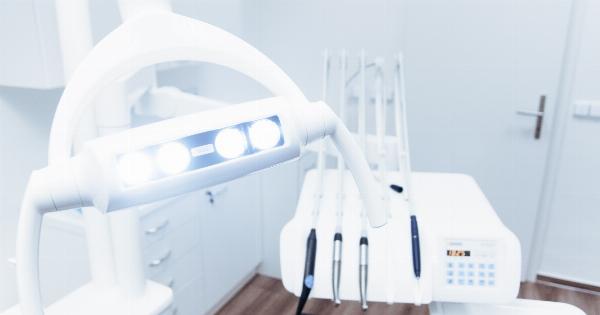The field of medicine is constantly evolving, with researchers and practitioners always on the lookout for innovative solutions to improve patient outcomes.
One such groundbreaking development is the City Medical’s Revolutionary Extended Quinge Correction, a revolutionary technique that is transforming the way we correct certain medical conditions. In this article, we will explore the intricacies of this groundbreaking procedure and its potential implications for the future of medical treatments.
Understanding Extended Quinge Correction
Extended Quinge Correction, also known as EQC, is a cutting-edge medical procedure developed by City Medical that aims to correct and treat a wide range of conditions that were previously thought to be untreatable or required invasive surgeries.
This technique utilizes advanced robotics and targeted non-invasive therapies to precisely target and correct specific medical conditions.
How Extended Quinge Correction Works
The procedure begins with a thorough diagnostic assessment performed by highly skilled clinicians at City Medical.
This evaluation includes advanced imaging techniques, such as magnetic resonance imaging (MRI) and computed tomography (CT) scans, to pinpoint the exact location and nature of the condition that needs correction. Once the assessment is complete, the medical team devises a personalized treatment plan tailored to the patient’s specific needs.
City Medical’s Extended Quinge Correction involves the use of state-of-the-art robotic technology, which allows for highly precise and controlled interventions.
The robot is equipped with a range of tools and instruments that can be precisely manipulated to target the affected area, providing relief or correcting the condition without the need for invasive surgery.
The procedure itself is typically conducted under local anesthesia, ensuring patient comfort throughout.
The robot is guided by the skilled hands of the medical team, who control its movements and monitor the progress in real-time through advanced imaging technology. This level of precision and control minimizes the risk of complications and facilitates faster recovery times.
Conditions Treated by Extended Quinge Correction
Extended Quinge Correction has demonstrated promising results in the treatment of various conditions. Let’s explore some notable examples:.
1. Spinal Misalignments
Spinal misalignments, such as scoliosis or kyphosis, are traditionally treated through invasive surgeries that involve fusing the affected vertebrae.
Extended Quinge Correction offers a non-invasive alternative by utilizing targeted corrections that gradually align the spine over time. This approach significantly reduces the associated risks and complications while ensuring improved patient outcomes.
2. Joint Disorders
Patients suffering from joint disorders, such as osteoarthritis, often find limited relief from conservative treatments. Extended Quinge Correction provides a novel approach for precise joint realignment, reducing pain and improving joint functionality.
The procedure can be tailored to target specific joints, such as the knee, hip, or shoulder, offering hope to individuals struggling with chronic joint conditions.
3. Vascular Abnormalities
Extended Quinge Correction holds tremendous promise in the treatment of various vascular abnormalities, including aneurysms and malformations.
By utilizing targeted interventions and localized therapies, the procedure can address these conditions without the need for invasive surgeries, thereby minimizing the risks associated with traditional treatment approaches.
4. Neurological Conditions
Neurological conditions, such as Parkinson’s disease or essential tremor, often require invasive brain surgeries to implant deep brain stimulation devices.
Extended Quinge Correction offers a non-invasive alternative that provides targeted stimulation to specific regions of the brain, effectively managing symptoms and improving the overall quality of life for the patients.
Advantages of Extended Quinge Correction
The Revolutionary Extended Quinge Correction brings numerous advantages to the table, making it an appealing treatment option for both patients and medical professionals. Some of the key advantages include:.
1. Minimally Invasive
Unlike traditional surgical interventions, Extended Quinge Correction is a minimally invasive procedure that eliminates the need for large incisions and the associated risks of complications.
2. Highly Precise
The advanced robotic technology employed in Extended Quinge Correction allows for unparalleled precision in targeting and correcting specific medical conditions, minimizing the risk of collateral damage.
3. Reduced Recovery Times
As the procedure is non-invasive, recovery times are significantly reduced compared to conventional surgeries. This allows patients to return to their daily activities and routine much faster, improving their quality of life.
4. Lower Risk of Complications
Extended Quinge Correction minimizes the risk of complications associated with invasive surgeries, such as infection, scarring, or excessive bleeding. This makes it an attractive option for individuals who are at higher risk for complications.
Conclusion
The Revolutionary Extended Quinge Correction developed by City Medical holds tremendous potential for revolutionizing the way we treat certain conditions.
By combining advanced robotics, non-invasive therapies, and highly skilled medical professionals, this technique offers a safer, more precise, and efficient alternative to traditional surgical interventions. Continued research and advancements in this field could pave the way for further breakthroughs, transforming the landscape of medical treatments.

























